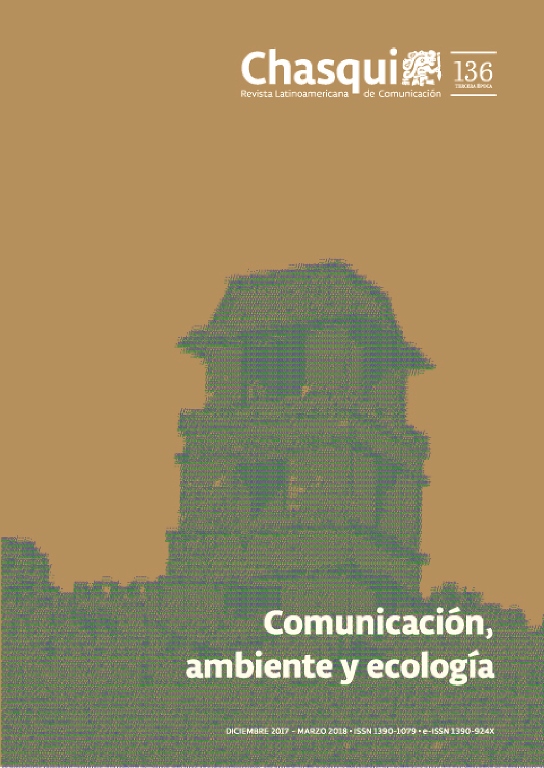Fundraising, communications and public relations. Cultural development of a city brand: Málaga
DOI:
https://doi.org/10.16921/chasqui.v0i136.2841Keywords:
strategy, fundraising, communications, stakeholders, cultureAbstract
Strategic management of communication and public relations with stakeholders, are tools of great utility for fundraising, in order to get a sustainable development of socio-cultural projects. We analyze its impact on the Málaga city brand, through an exploratory study with the most representative institutions´ key reporters: heads of the Council, Film Festival, Centre of contemporary art, Russian Museum, the Automobile Museum, Pompidou Center, Picasso Museum and Museo Carmen Thyssen. With the results, we establish a conceptual map that correlates the communication skills with the perception of the city brand, the level of confidence of stakeholders and its use to attract investors.References
Aaker, D. A. (1992). The Value of Brand Equity. Journal of Business Strategy, 13(4), 27-32.
Aaker, J. L. (1997). Dimensions of Brand Personality. Journal of Marketing Research, 34(3), 347.
Ashworth, G. & Kavaratzis, M. (2007). Beyond the logo: Brand management for cities. Journal of Brand Management, 16(8), 520-531.
Austin, J. E. (2000). The collaboration challenge: How nonprofits and businesses succeed through strategic alliances. San Francisco, SF: Jossey-Bass.
Baca, M. & Bagb, P. K. (2003). Strategic information revelation in fundraising. Journal of Public Economics, 87 (1), 659-679.
Breeze, B., Wilkinson, I., Gouwenberg, B. & Schuyt, T. (2011). Giving in evidence. Fundraising from philanthropy in European universities. Studies and Reports. Brussels: European Commission.
Byrnes, W. (2012). Management and the arts (4th;4 ed.). NL: Taylor & Francis Ltd.
Castillo, A. (2010). Introducción a las Relaciones Públicas. Málaga: Instituto de Investigaciones en Relaciones Públicas. Versión electrónica Jabega.
Capriotti, P. (2013). Planificación estratégica de la imagen corporativa. 4ª Ed. Málaga: Instituto de Investigación en Relaciones Públicas.
Cartwright, E. & Patel, A. (2013). How category reporting can improve fundraising. Journal of Economic Behavior & Organization, 87 (1), 73-90.
Cho, M. & Kelly, K. S. (2014). Corporate Donor–Charitable Organization Partners: A Coorientation Study of Relationship Types. Nonprofit and Voluntary Sector Quarterly, 43(4), 693-715.
Chung, J. Y., Lee, J. & Heath, R. L. (2013). Public relations aspects of brand attitudes and customer activity. Public Relations Review, 39(5), 432-439.
Dale, E. J. (2017). Fundraising as women's work? examining the profession with a gender lens. International Journal of Nonprofit and Voluntary Sector Marketing, 22(4), n/a.
De las Heras-Pedrosa, C., Jambrino-Maldonado, C. & Iglesias-Sánchez, P. (2016). Fundraising en la universidad pública como fórmula de captación de recursos. Prisma Social, 06/2016 (16), 711-753.
Diario Expansión (2015, 24 de junio). Cuatro provincias españolas liderarán el crecimiento en Europa hasta 2020. Economía. Disponible en http://bit.ly/1Iy68m7.
Hankinson, G. (2004). Relational network brands: Towards a conceptual model of place brands. Journal of Vacation Marketing, 10(2), 109-121.
Jambrino-Maldonado, C. & De las Heras-Pedrosa, C. (2013). Building a model of corporate reputation observatory for a tourist destination. Tourism of Management Studies, 1 (1), 66-76.
Kaplan, M. D., Yurt, O., Guneri, B. & Kurtulus, K. (2010). Branding places: Applying brand personality concept to cities. European Journal of Marketing, 44(9/10), 1286-1304.
Kelly, K.S. (1995). Utilizing public relations theory to conceptualize and test models of fundraising. Journalism and Mass Communication Quarterly; Spring, 72 (1); ABI/INFORM, 106-127.
Kelly, K.S. (1998). Effective fundraising management. Mahwah, NJ: Lawrence Erlbaum Associates.
Kotler, P. & Gertner, D. (2002). Country as brand, product, and beyond: A place marketing and brand management perspective. Journal of Brand Management, 9(4), 249-261.
Mainardes, E.W., Raposo, M. & Alves, H. (2014). Universities Need a Market Orientation to Attract Non-Traditional Stakeholders as New Financing Sources. Public Organiz Rev, 14 (1), 159-171.
Marx, J. D. (1999). Corporate philanthropy: What is the strategy?. Nonprofit and Voluntary Sector Quarterly, 28, 185-198.
Mattsson, J. (1992). A Service Quality Model Based on an Ideal Value Standard. International Journal of Service Industry Management, 3(3), 18–33.
McKeever, B. W., Pressgrove, G., McKeever, R. & Zheng, Y. (2015). Toward a theory of situational support: A model for exploring fundraising, advocacy and organizational support. Public Relations Review, en impresión.
Matilla, K. (2009). Conceptos fundamentales en la Planificación Estratégica de las Relaciones Públicas. Barcelona: Editorial UOC.
Míguez-González, M. I. (2007). Análisis del uso de los conceptos de público, stakeholder y constituent en el marco teórico de las relaciones públicas. Zer, 23 (1), 183-197.
Moon, S. l. & Azizi, K. (2013). Finding Donors by Relationship Fundraising. Journal of Interactive Marketing, 27 (1), 112-129.
Porter, M. E. & Kramer, M. R. (2002). The competitive advantage of corporate philanthropy. Harvard Business Review, 80(12), 56-68.
Sanders, K. & Canel, M.J. (2015). Mind the gap: Local government communication strategies and Spanish citizens’ perceptions of their cities. Public Relations Review, 41 (1), 777-784.
Sevin, H. E. (2014). Understanding cities through city brands: City branding as a social and semantic network. Cities,38 (1), 47-56.
Smith, C. (1994). The new corporate philanthropy. Harvard Business Review, 72(3), 105-114.
Downloads
Published
Issue
Section
License
- Authors retain copyright and grant the journal right of first publication with the work simultaneously licensed under a Creative Commons Attribution-NoDerivs License (CC BY-ND) that allows others to share the work with an acknowledgement of the work's authorship and initial publication in this journal.
- Authors are able to enter into separate, additional contractual arrangements for the non-exclusive distribution of the journal's published version of the work (e.g., post it to an institutional repository or publish it in a book), with an acknowledgement of its initial publication in this journal.
- Authors are permitted and encouraged to post their work online.

